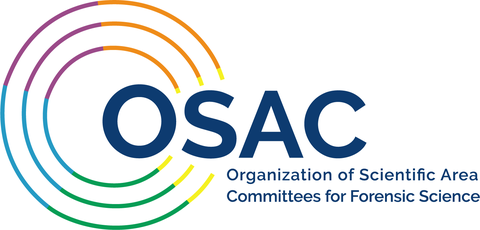Measuring the Impact of Implementation: 2023

INTRODUCTION:
The Organization of Scientific Area Committees (OSAC) for Forensic Science reached its 10th anniversary in 2024. OSAC’s mission is to strengthen the nation’s use of forensic science by facilitating the development of technically sound standards and encourage their use throughout the forensic science community. Measuring success requires evaluating the extent that forensic science service providers (FSSPs) are implementing standards that have been developed and posted on the OSAC Registry.
As of January 3, 2024, there were 178 standards posted on the OSAC Registry in 22 forensic science disciplines, including interdisciplinary standards. As of the same date, there were also 150 FSSPs that had completed and submitted an OSAC Registry Standards Implementation Declaration form from 31 states and four foreign countries. The 150 FSSPs declaration forms contain information on the status of all relevant standards on the OSAC Registry applicable to the disciplines practiced within the agencies reporting to OSAC on their forms. The number of standards reported by the 150 FSSPs that had been implemented either fully or partially totaled 2,259 for an average of approximately 15 standards implemented per agency.
In measuring the success of OSAC, it is key to assess the degree to which standards on the OSAC Registry have been implemented by the agencies which have submitted declaration forms as of January 2024. While there are many more FSSPs that have implemented standards that have not declared and remain unknown to OSAC, the purpose of this article is to quantify and report the actual data from the 150 FSSPs that have reported standards implementation on their declaration forms.
DATA:
A summary of findings from a meta-analysis of declaration data is provided below. To further illustrate the extent of implementation beyond what is provided below, you can view this status table which lists all 178 standards on the OSAC Registry (categorized by discipline in alphabetical order) as of January 2024.
Summary of Data:
- Number of standards on the OSAC Registry: 178
- Number of FSSPs that submitted declaration forms: 150
- Total number of standards reported fully or partially implemented 1: 2,259
- Average number of standards implemented by each FSSP: 15.06
Top 10 Most Frequently Implemented Standards:
| Standard | Number of FSSPs |
|---|---|
| 98 |
| 2. ISO/IEC 17025:2017 General Requirements for the Competence of Testing and Calibration Laboratories | 93 |
| 3. ANSI/ASTM E2548-16 Standard Guide for Sampling Seized Drugs for Qualitative and Quantitative Analysis | 91 |
| 4. ANSI/ASTM E2917-19a Standard Practice for Forensic Science Practitioner Training, Continuing Education, and Professional Development Programs | 87 |
| 5. ANSI/ASB Best Practice Recommendation 068, Safe Handling of Firearms and Ammunition. 2020. 1st Ed. | 64 |
| 6. ANSI/ASB Best Practice Recommendation 037, Guidelines for Opinions and Testimony in Forensic Toxicology, 2019. 1st. Ed. | 58 |
| 7. ANSI/ASB Standard 017, Standard Practices for Measurement Traceability in Forensic Toxicology. 2018. 1st. Ed. | 57 |
| 8. ANSI/ASB Standard 022, Standard for Forensic DNA Analysis Training Programs. 2019. 1st Ed. | 57 |
| 9. ANSI/ASB Standard 020, Standard for Validation Studies of DNA Mixtures, and Development and Verification of a Laboratory’s Mixture Interpretation Protocol. 2018. 1st. Ed. | 56 |
| 10. ANSI/ASB Standard 040, Standard for Forensic DNA Interpretation and Comparison Protocols. 2019. 1st. Ed. | 56 |
CONCLUSIONS:
The measurement of standards implementation among FSSPs in the United States is critical to understanding the effectiveness of standards development and its impact on implementation in forensic science operations. Moreover, OSAC will continue compiling and reporting this information on an annual basis as implementation data collection efforts move forward.
Only by evaluating the metrics of standards implementation can we develop an accurate assessment of the impact of standards posted on the OSAC Registry and measure changes from year to year. Studying these data is the only way to begin to understand the underlying causes leading to more effective development and adoption of those standards. Some examples of how these data would be helpful include:
- Identify which standards are finding the greatest acceptance as measures of success.
- Determine which standards are not finding widespread acceptance and determine possible causes.
- Determine challenges with respect to defining differences between full and partial implementation.
- The quality of the evaluations of standards implementation data studies depends significantly on the amount of data submitted to OSAC by FSSPs. We encourage all FSSPs to complete and submit initial declaration forms and updates of previously submitted forms. Only through this practice can the value of standards implementation measurements be maximized for all forensic science and criminal justice stakeholders in the future.
Associated Links

